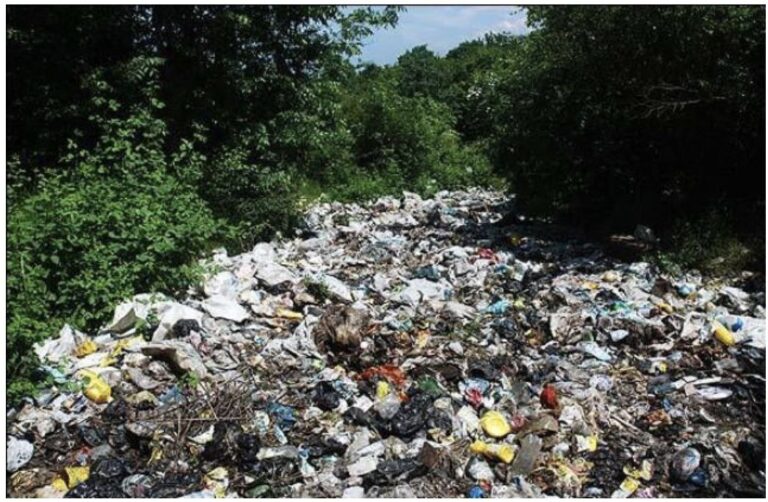Crisis of waste handling and disposal, persistent pollution in northern forests
April 24, 2022
Expert and environmental activists in Iran warn that 1.5 hectares of lush greenery and pristine Hyrcanian forests and Saravan around Rasht in northern Iran are polluted and destroyed annually by dumping various wastes used as landfills. About 16 hectares of forestlands in Saravan are currently polluted by household, industrial garbage, and special hazardous materials mixed with hospital waists. In some places, a mountain of litter reaches up to 95 meters. The volume of waste in the area is estimated at more than one million tons annually, adding about 2,000 tons of waste and other garbage daily.
Due to the unsanitary release of waste, more than 430,000 liters (154 million liters per year) of toxic leachate are produced per day and enter the river, aquifers, and drinking water. In addition, in the seasons of strong wind, wastes are carried over on Anzali International Wetland, Caspian Sea, and farms, resulting in an unsafe environment for livestock, poultry, and aquatic animals. These contaminants have also caused many skin diseases, gastrointestinal and even cancer among the poor residents and villagers. Among other damages caused by this type of pollution, we can name the irreparable economic losses to the tourism industry in the Saravan region of Rasht in Gilan province.
Of course, the waste crisis is not limited to Saravan. Dumping waste as the most primitive and convenient way possible occurs in the forest areas of Talesh, Rudsar, Soomehsara, Langrud, Astara, Lahijan, and Gorgan. In recent years, companies and Garbage collection contractors responsible for the operation are close to the government and IRGC, destroying vast amounts of soil, air, and drinking water aquifers in the north through chemical interactions and successive acid rains and floods. Life in the said areas is in grave danger by continuing the cycle of pollution.
The ongoing protests by residents and environmentalists have forced the regime’s media and newspapers to briefly publish news about the issue. Hence, the municipality and government officials of Saravan have so far not initiated any specific, necessary, and effective program in the collection, transportation, and sanitary disposal of waste. There are no compost plants to separate various types of wastes nor any procedure for treating leachate, let alone establishing a waste incinerator or a scientific and sanitary waste disposal-engineering site. It is estimated that only about $20m is needed to launch a waste incineration project. The lowest estimates indicate that the Iranian regime has spent hundreds of millions of dollars only on the Missile program to destabilize the Middle East via its proxies in Iraq, Syria, Lebanon, and Yemen.
On February 3, 2022, environmental activists warned the regime’s president, Ebrahim Raisi, in a statement published online with the title “Request to address the garbage situation in Saravan, the most serious environmental pollution in Gilan.” In the statement, the activists demand an immediate change to properly dispose of garbage in the area. Experience has shown that regime officials never respond to such demands and continue to plunder the country’s budget and financial resources to export terrorism, nuclear, and missile projects.
The Green Party of Iran, cooperating with environmental activists on various campaigns and supporting their legitimate demands, strongly believe that the most effective way to save Iran’s fragile environment is achieved by actively participating in the common goal of people’s everyday struggle to change the ruling regime in Iran.


